Israelis flock to this tiny town in Peru for vacation — and psychedelic spirituality
In Pisac, a town of 10,000 nestled in the Andes, Hebrew is often heard more consistently than English or local dialects
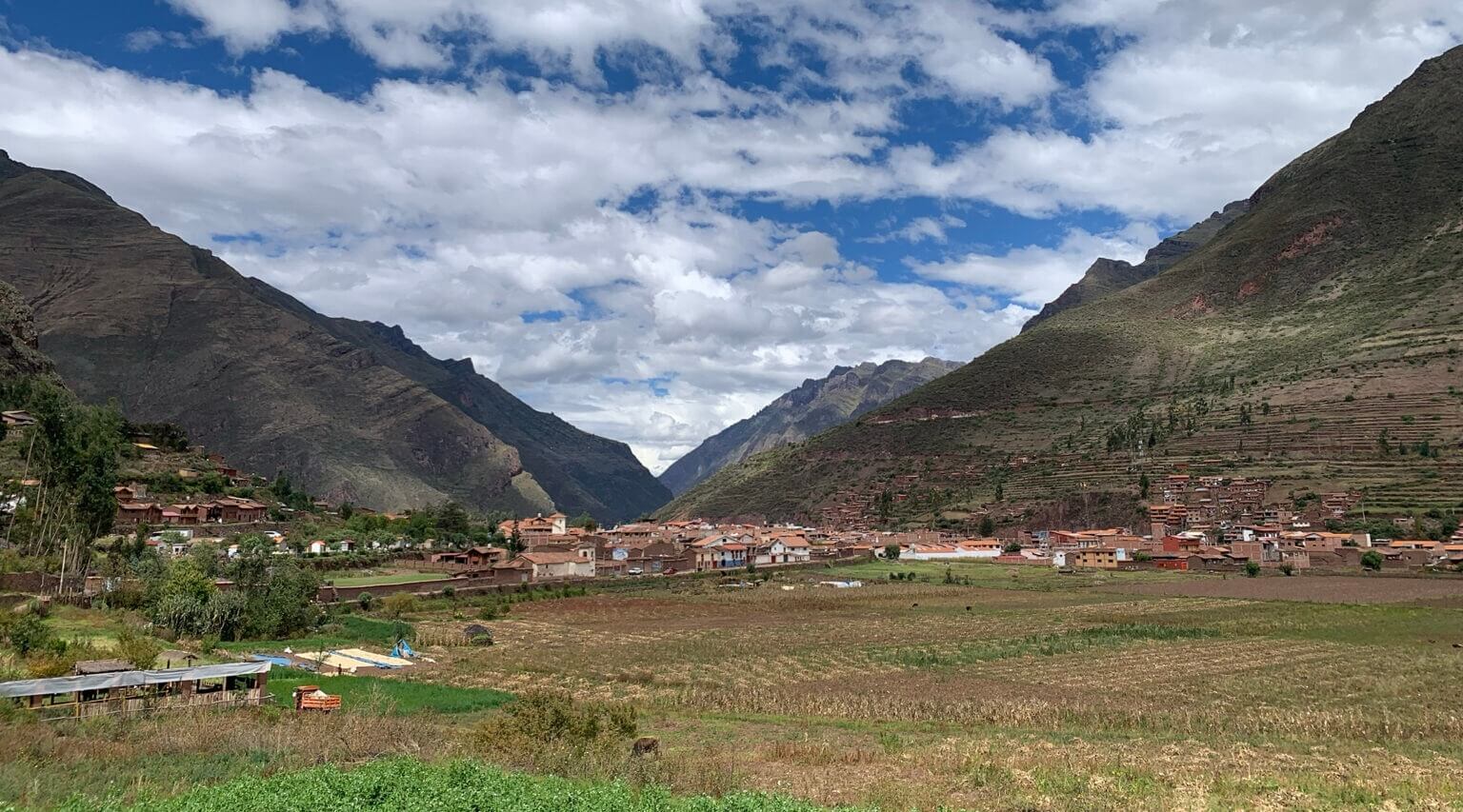
Pisac sits in the Andes Mountains, 20 miles outside of Cusco. Photo by Jacob Kessler
PISAC, Peru (JTA) — About 20 miles northeast of the tourist capital of Cusco, the small Peruvian town of Pisac sits nestled among the verdant Andes Mountains. Lined with cobblestone streets and two-story adobe houses, the town offers a distinct blend of ancient Incan culture and breathtaking landscapes.
Pisac’s main square, Plaza de Armas, is often filled with Indigenous women pulling alpacas, local art dealers selling their handmade artisanal wares and kids playing soccer — nothing out of the ordinary for a tourist town in the Andes. But directly across from the plaza’s church, a recent addition to the square stands out.
A yellow flag with a blue crown is draped over the bannister of one of the two-story buildings flanking the square, reading “Mashiach” — “Messiah” in Hebrew.
The flag marks the building as an outpost of the Hasidic Chabad-Lubavitch movement, which has placed emissaries in dozens of countries. Opened in April, the Pisac outpost is Chabad’s third in Peru, after Lima and Cusco. Leaders of Chabad Cusco decided to send an emissary to open a branch in Pisac because of a trend that locals here have noticed over the past few years: the town’s popularity with Israeli tourists.
In Pisac, Hebrew is often heard more consistently on the streets than English or Quechua, the most widely spoken of Peru’s indigenous languages. The local Chabad rabbi said that 50-100 people pack his Shabbat services every week. Multiple restaurants have translated their menus to Hebrew. Dozens of yellow stickers are scattered around the town of around 10,000 featuring the face of the Chabad movement’s former leader, Menachem Mendel Schneerson, commonly known as the Lubavitcher Rebbe.
“I love it here,” said Liad Shor, a 26-year-old Israeli who has been in Pisac for more than a month. “Pisac is a very known place for Israelis to travel, so I wanted to check how it is.”
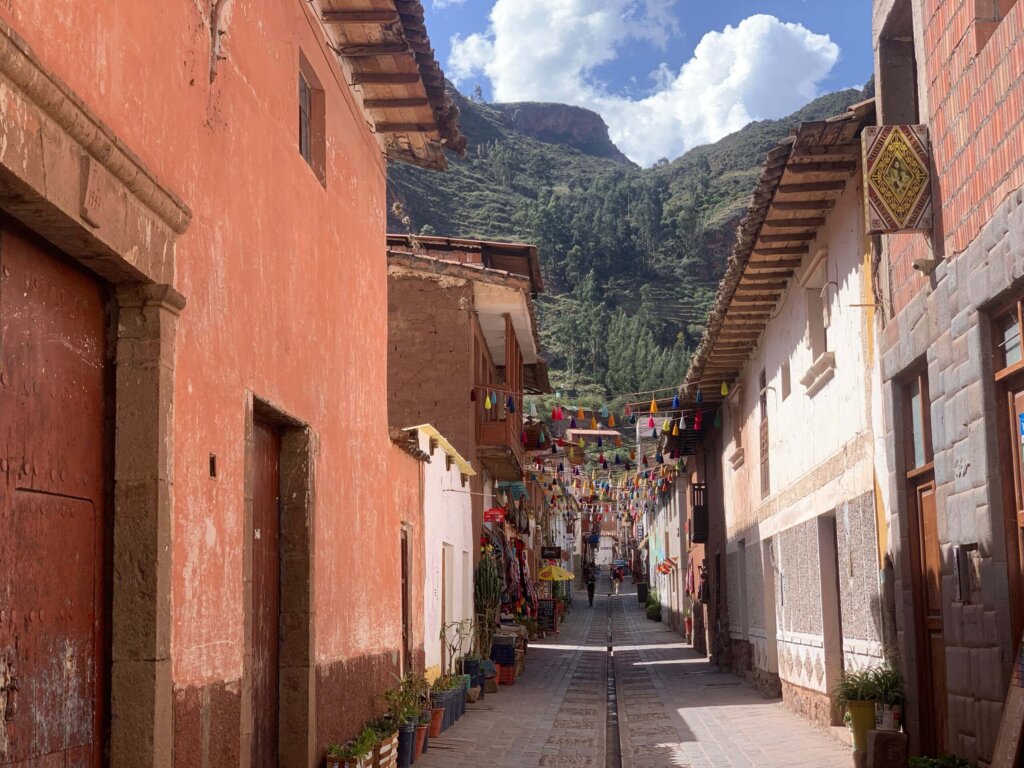
The town is increasingly becoming a part of the “Hummus Trail,” an informal route that many young Israelis follow after completing their mandatory army service. Functioning through word of mouth, the Hummus Trail has been used to refer to places in Southeast Asia, but in recent years it has been applied to regions of Latin America, too. Various stops across South America have become so popular with Israelis that locals have started to cater specifically to them.
But Pisac is not only a layover for young Israeli tourists looking for a few days of peace and quiet. Many slightly older Israelis, attracted to the spirituality infused in everyday life in Pisac — often involving locally-grown psychedelic substances — have chosen to call Pisac their permanent home.
Nitzan Levy, a 30-year-old Israeli from the Jerusalem area, is among the dozens of Israelis — possibly hundreds — who have moved to Pisac and the wider Sacred Valley region as an escape from Israeli society.
“I’m making up data, but it’s like 80% of Israelis are living with post-traumatic stress,” Levy told the Jewish Telegraphic Agency. “I mean, it’s a tough environment to live in when you’re constantly in survival mode. So, living in alternative communities like here, or also like in Costa Rica, or in Guatemala, or in Thailand… you can get away from the intensity of it all and find your own healing. Because all of us have experienced war in some way or other and we need to heal as a society, but we cannot do it in Israel yet.”
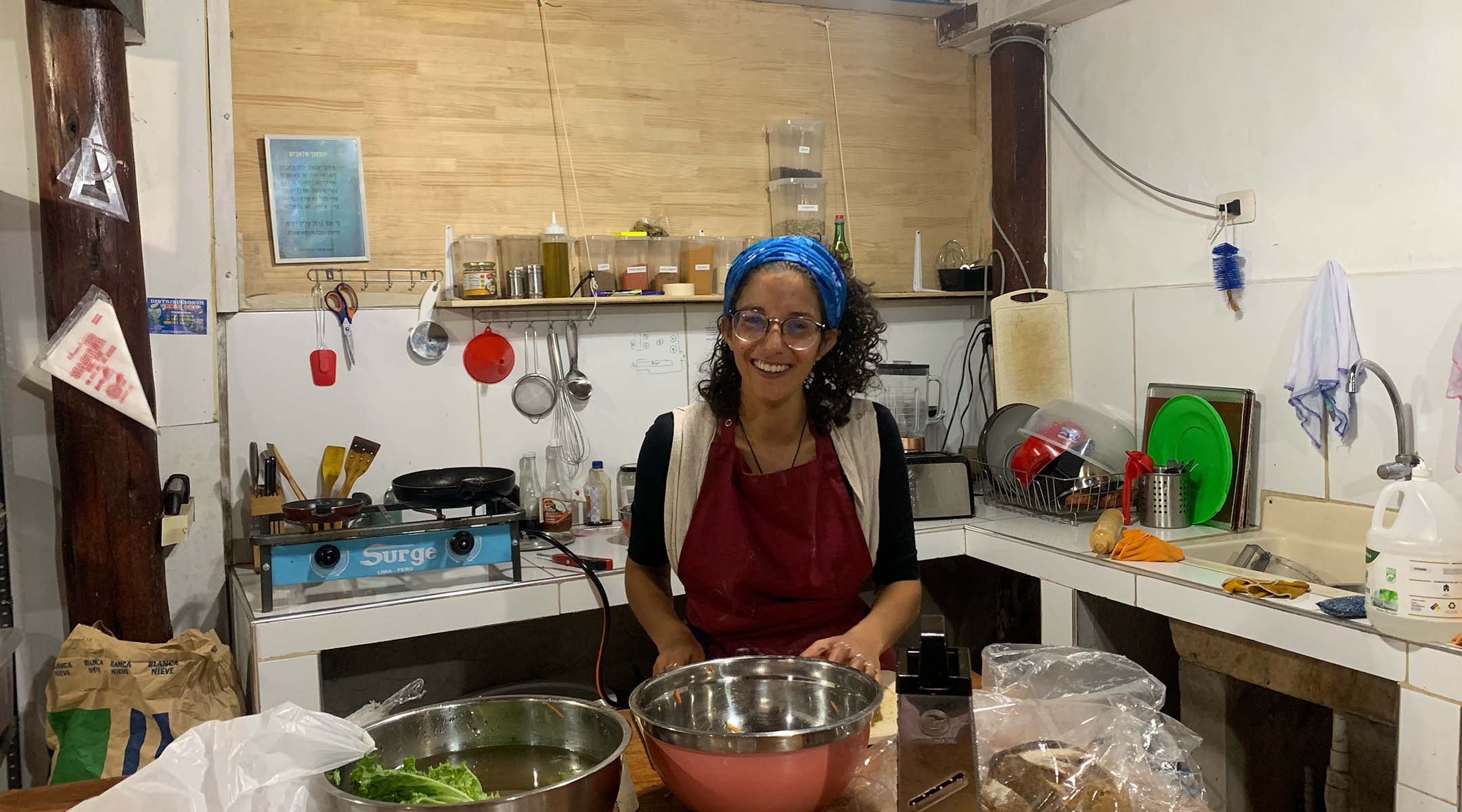
The “healing” Nitzan refers to often comes in the form of what locals label “planta medicina,” or psychedelics such as ayahuasca and San Pedro. For visitors from around the world, not only Israelis, Pisac has become a haven for those who wish to have an encounter with these plants, which can temporarily alter one’s state of reality and heighten one’s senses. It is legal here to partake in plant medicine ceremonies, and many decide to do so to heal childhood trauma, cure deeply-rooted addictions or attempt to have an encounter with the divine.
Aminadav Shvat, a 36-year-old Israeli, also decided to settle in Pisac for the spirituality and plant medicine he found here. He was drawn to San Pedro, a psychedelic cactus indigenous to the Andes. He spoke to JTA while wearing tefillin from inside an Israeli restaurant he opened up in Pisac last year.
“When we try some psychedelics, we actually find a connection very similar to Moshe Rabbeinu with the sneh,” Shvat said, referring to the biblical story of Moses and the burning bush. “We strengthen the connection between humans and God.”
“So I came to the Sacred Valley to try San Pedro but I stayed because there is a community of people working on themselves spiritually,” he added. “There’s a lot of magic here.”
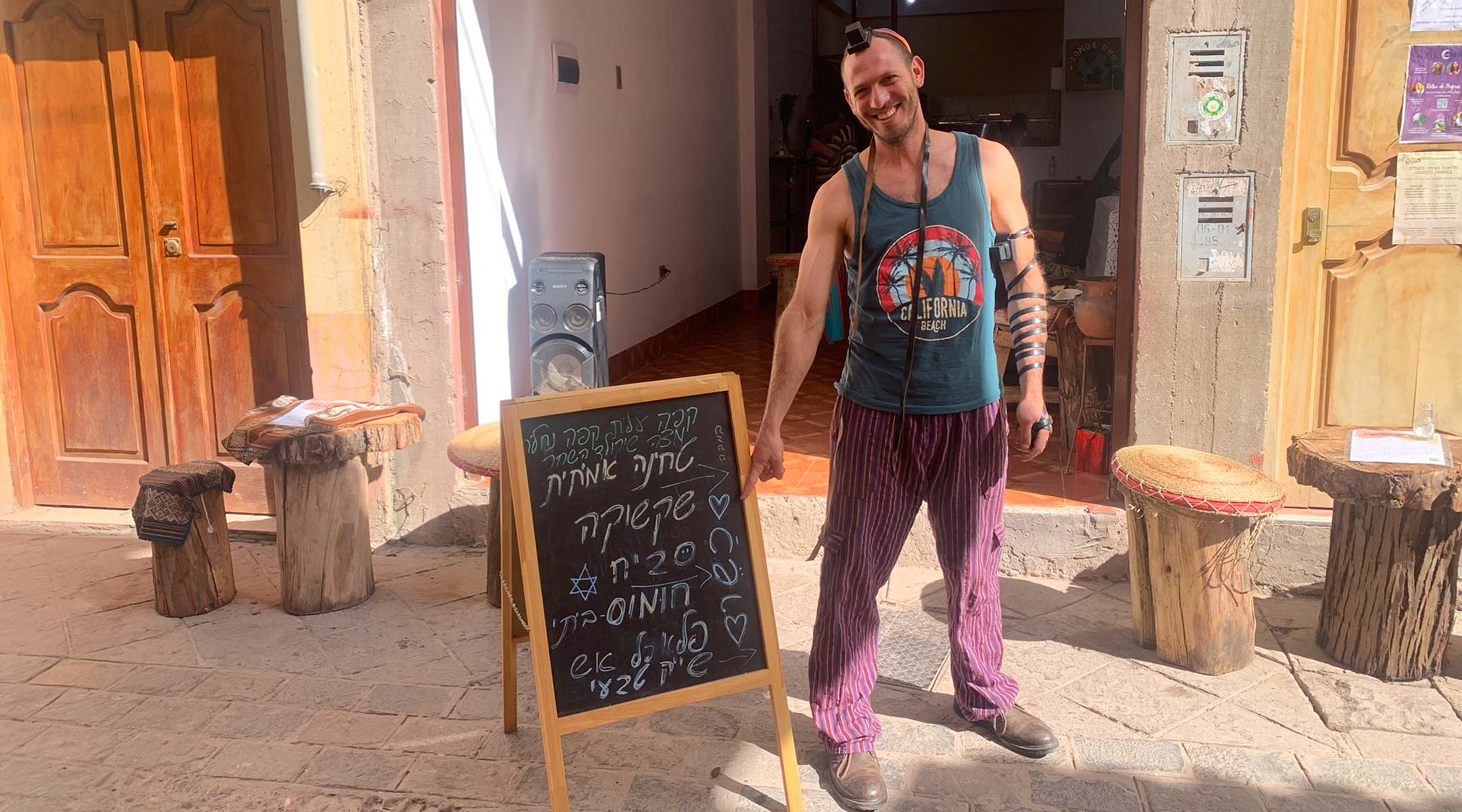
Shvat, who comes from a family of rabbis, decided to settle in Pisac and open a restaurant to serve as a gathering place for Jewish travelers. He organizes Shabbat dinners that are occasionally frequented by non-Jewish locals and last year organized an “alternative” Yom Kippur service complete with a meditation by a river.
Rabbi Ariel Kadosh, the 25-year-old leader of Chabad Pisac and a former student at Chabad Cusco, had originally wanted to open up a branch of Chabad in Morocco with his wife Talia.
“At first, I had never heard of Pisac,” Kadosh said. “But after arriving here, we realized that people come to Pisac for spiritual experiences…so I think it’s a really good place for a Chabad.”
Kadosh disagrees with those who try to connect with spirituality through psychedelic substances, but he does welcome the opportunity to speak with travelers about god and other spiritual topics after they have a psychedelic journey.
He told a story of a spiritual seeker who wrote to the Lubavitcher Rebbe asking about the permissibility of using LSD as a means to connect with god. In response, the Rebbe said that the “Jewish way” is to attain spiritual heights through struggle.
“For me, specifically, I don’t think it’s right,” Kadosh said about the use of psychedelics. “The Rebbe says it is not our way.”
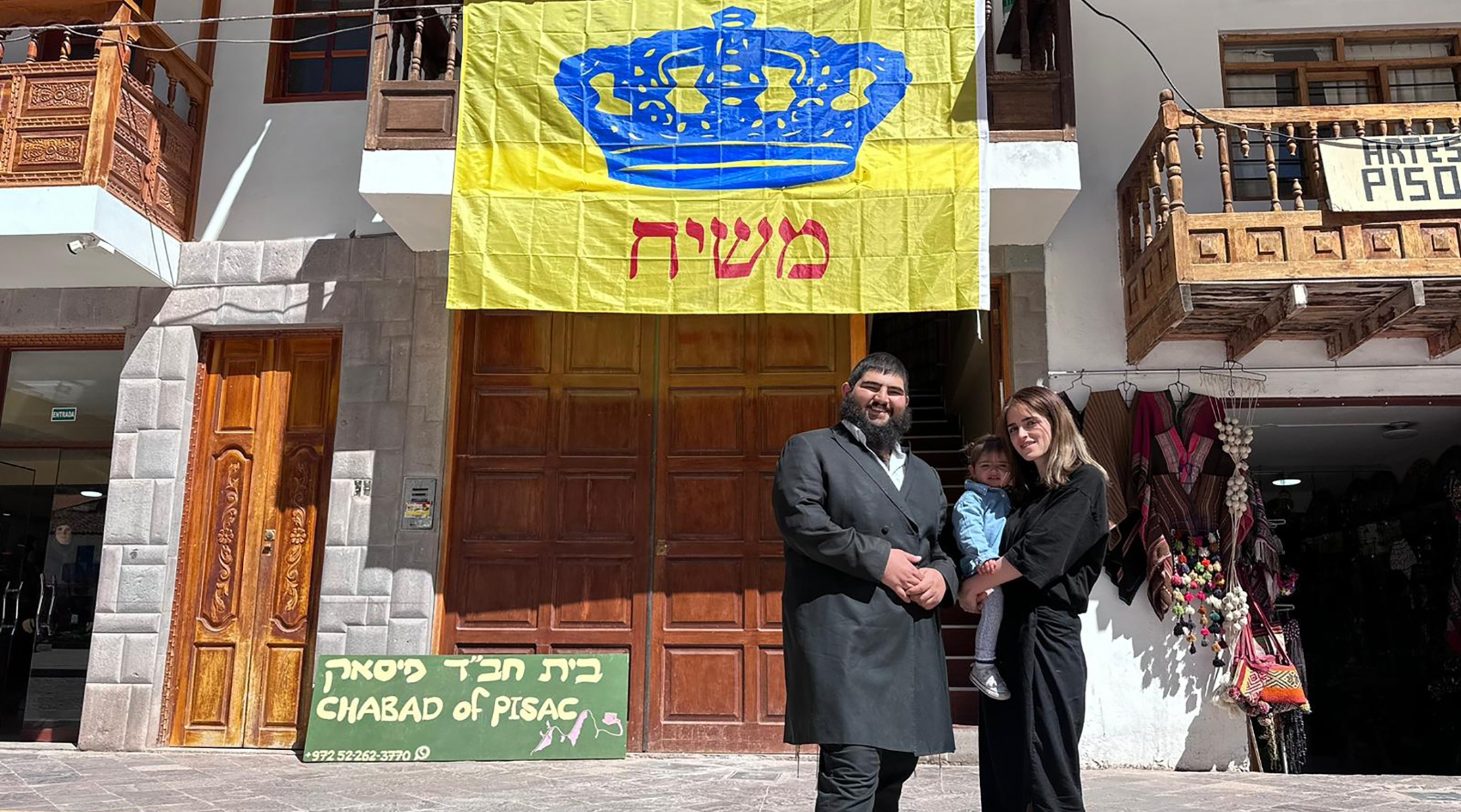
Despite the town’s peaceful facade, not everyone is happy with the influx of Israelis. Some locals expressed frustration to JTA with the young Israeli travelers, who they claim try to haggle excessively when buying things. Aminadav pointed to another phenomenon.
“On the corner of the street, I put a sign in Hebrew for my restaurant,” says Aminadav. “And someone put a sticker of the Palestinian flag with the words ‘Israel, killer state.’”
Although the Schneerson stickers outnumber the ones with the Palestinian flag, the latter can also be found throughout the town.
Then last week, reports of a violent attack inside the Chabad house circulated on social media. In a post in a community Facebook group, someone accused a Chabad student of attacking a woman and threatening her with a blade. Comments on this post ranged from disbelief to statements such as: “Isn’t that what they do in Palestine everyday?”
The Chabad leaders claimed that a drunken local couple entered the building at 2 a.m. and started to make antisemitc comments, adding that the student was simply defending himself. Local police said that neither side had reported the incident in the end.
The new Chabad leaders are deterred by the recent tensions. Kadosh said that he plans on teaching Kabbalah classes on the roof of the new Chabad building and also wants to host nigun sessions, which involves chanting spiritual Hasidic melodies.
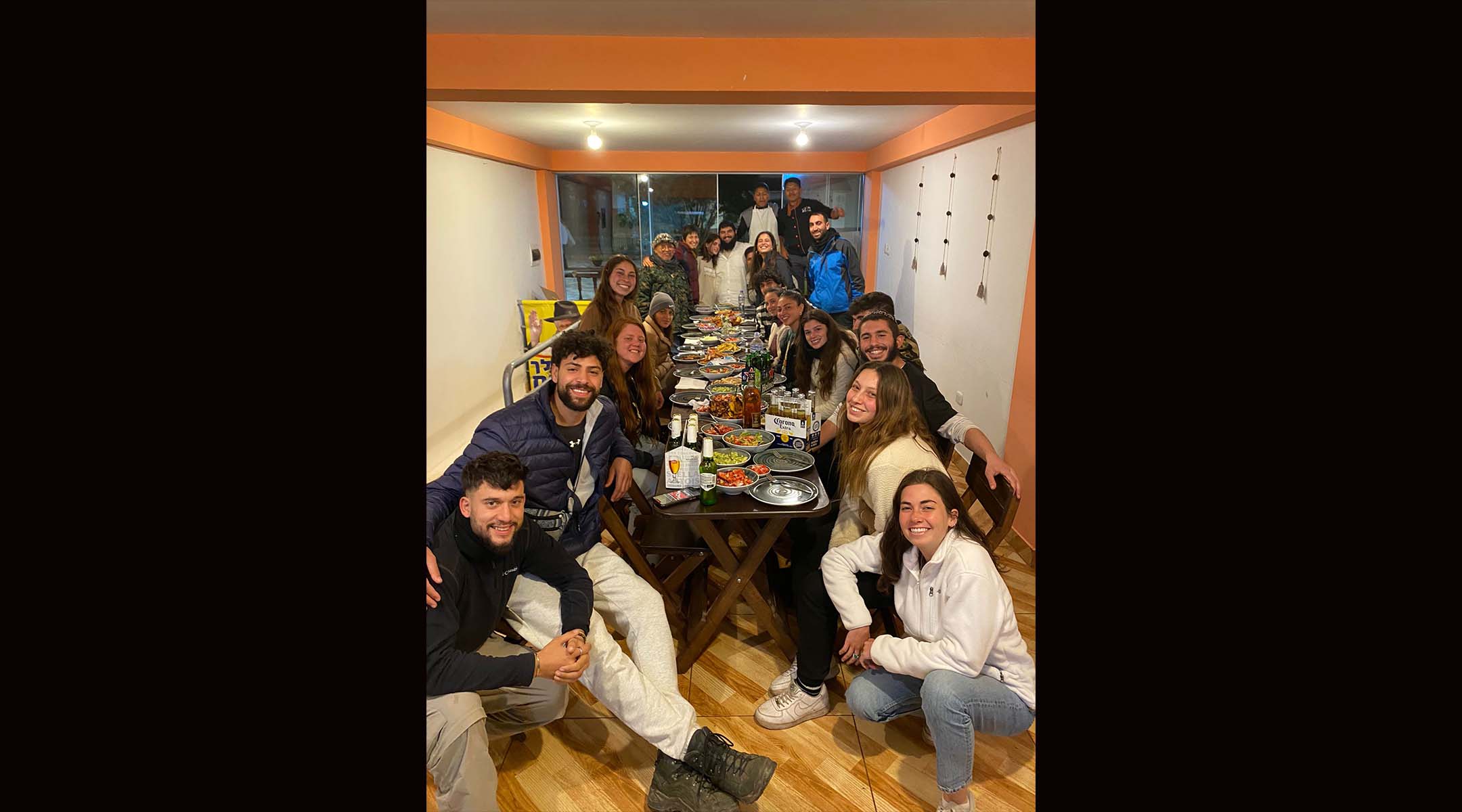
After working with Israelis for more than 30 years, Sergio Quispe Maita can understand “70 to 80 percent of Hebrew.” He began learning the language while working as a cook at an Israeli restaurant in Cusco called Nargila. He committed to learning three words a day, and now he converses in Hebrew at his very own Israeli restaurant in Pisac called Nafis.
Maita’s restaurant is attached to Colores Hostel, one of the most popular hostels in Pisac for young Israelis — to the extent that some in town have even labeled it the “Israeli hostel.” So the local restaurateur has daily opportunities to practice his Hebrew.
“Thank God, I speak the language, so I understand them,” he said. “And I know that with time, Pisac will be filled with many more Israelis because it is a small town and is very attractive to people looking to enjoy the quiet.”
This article originally appeared on JTA.org.





















